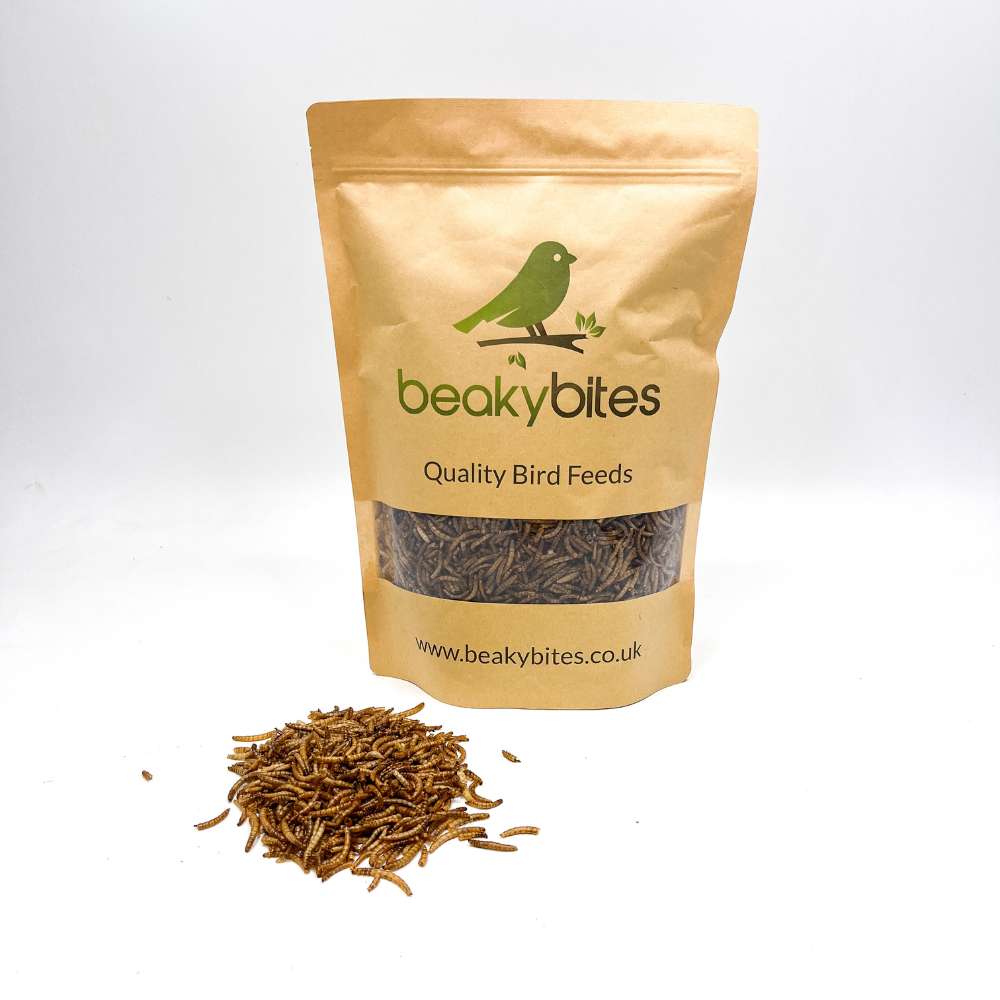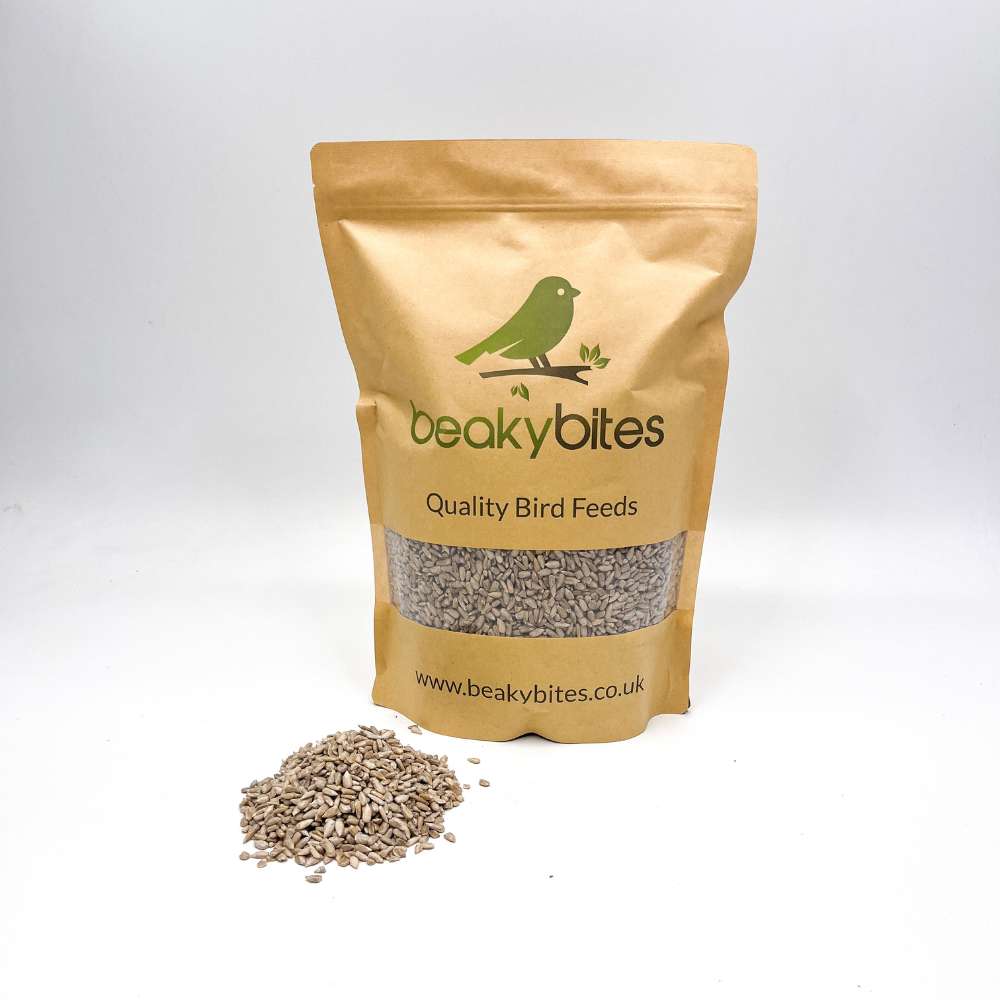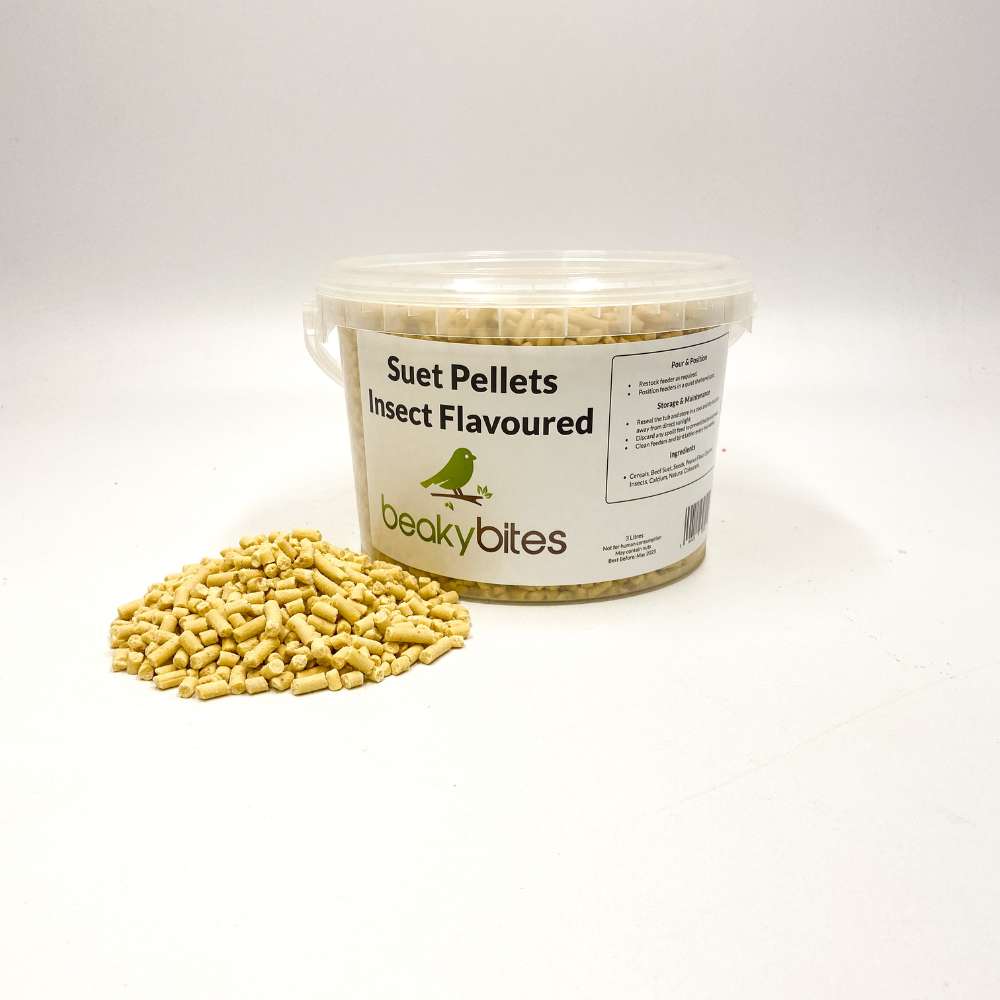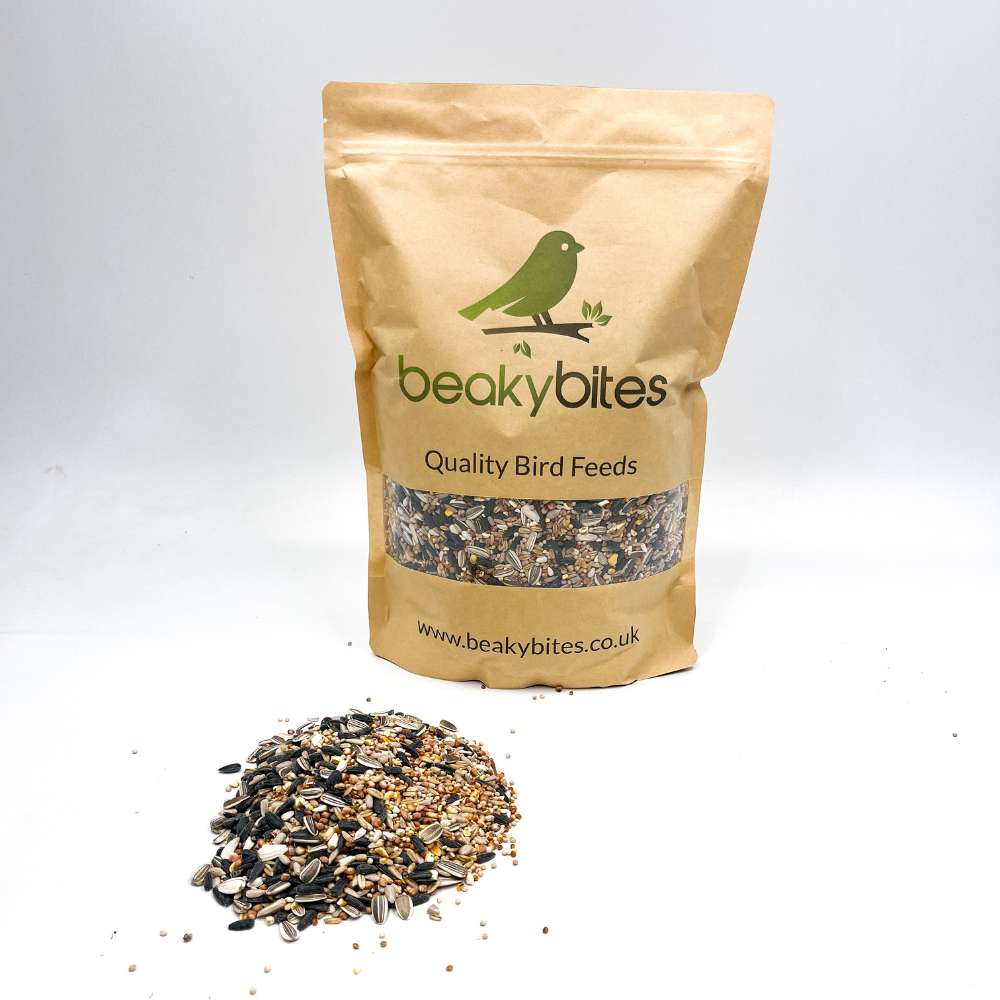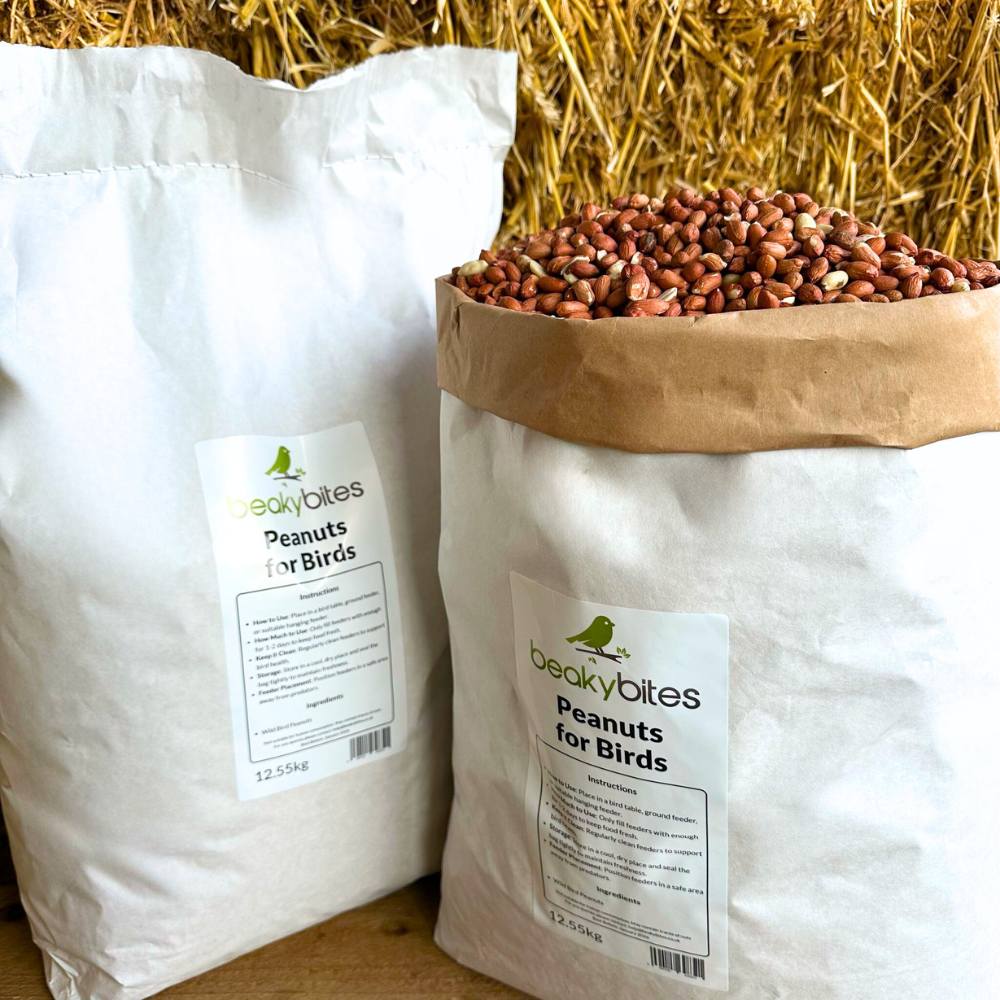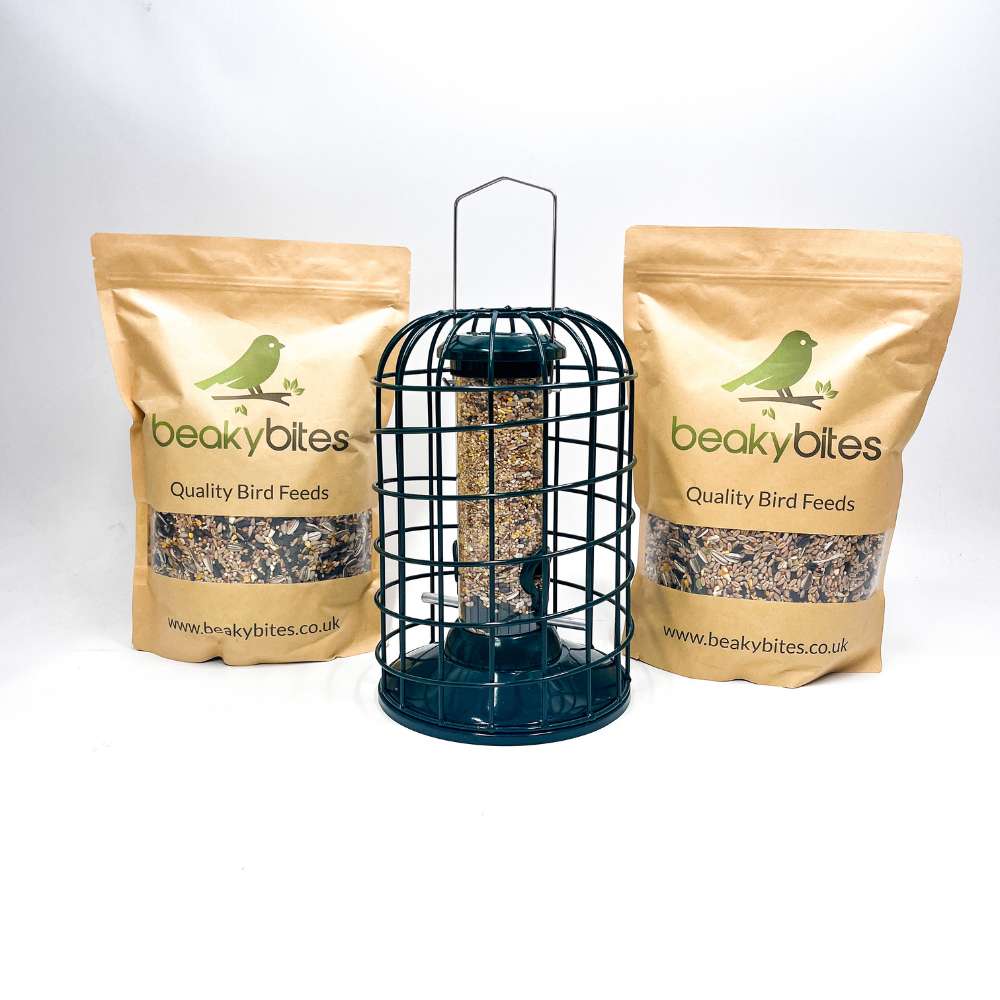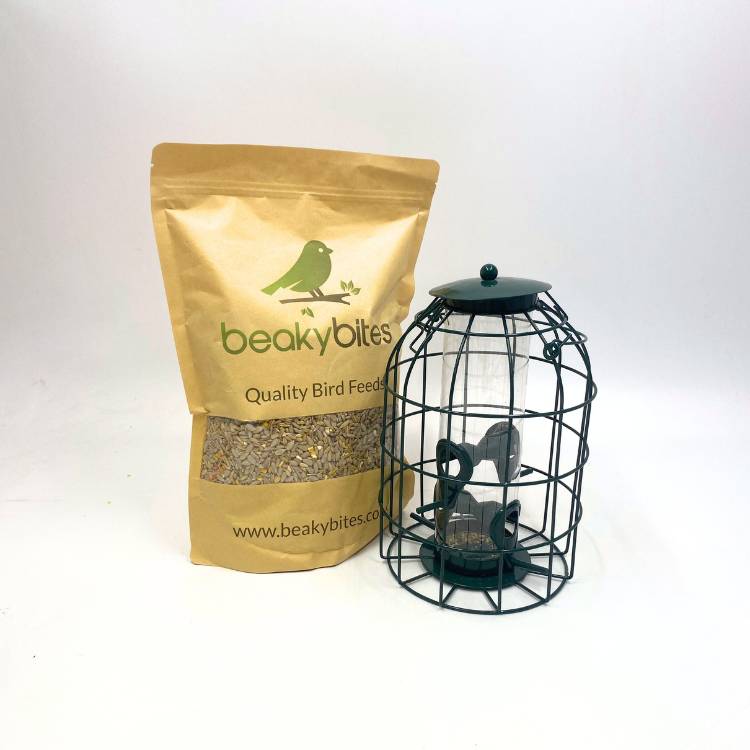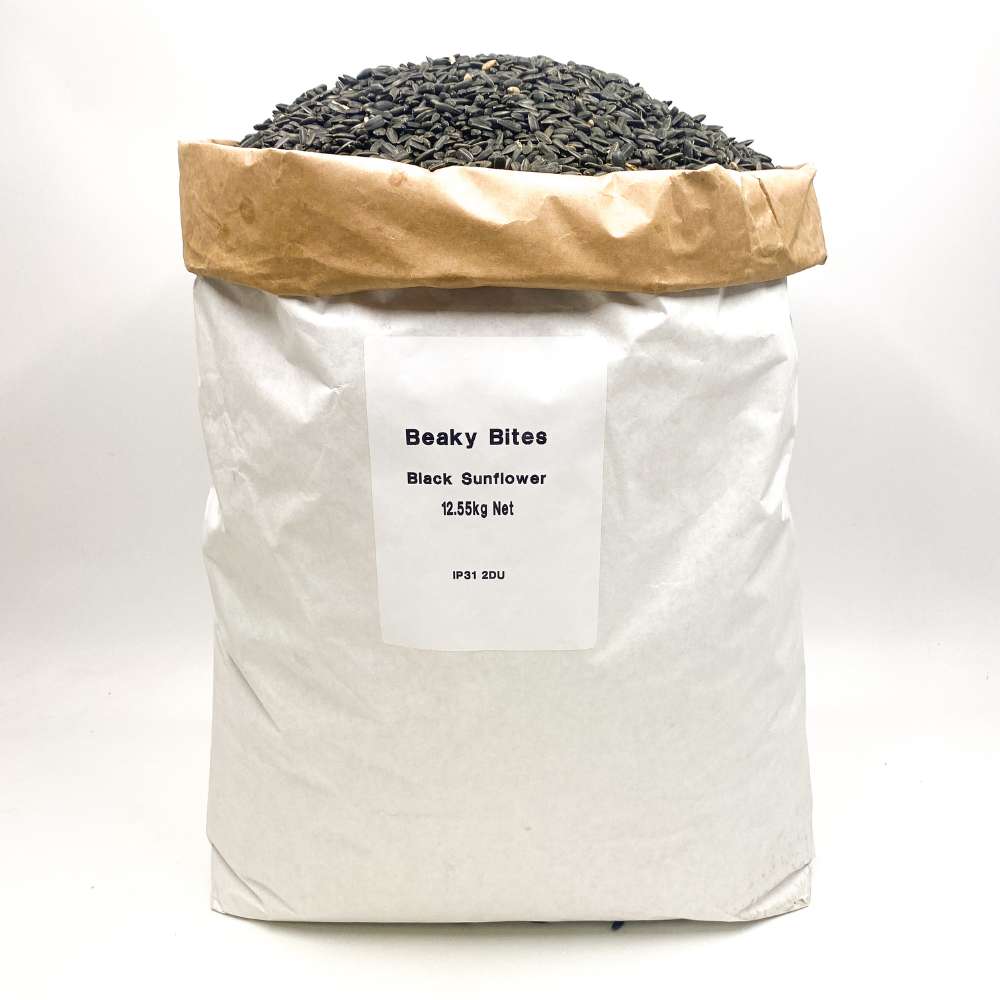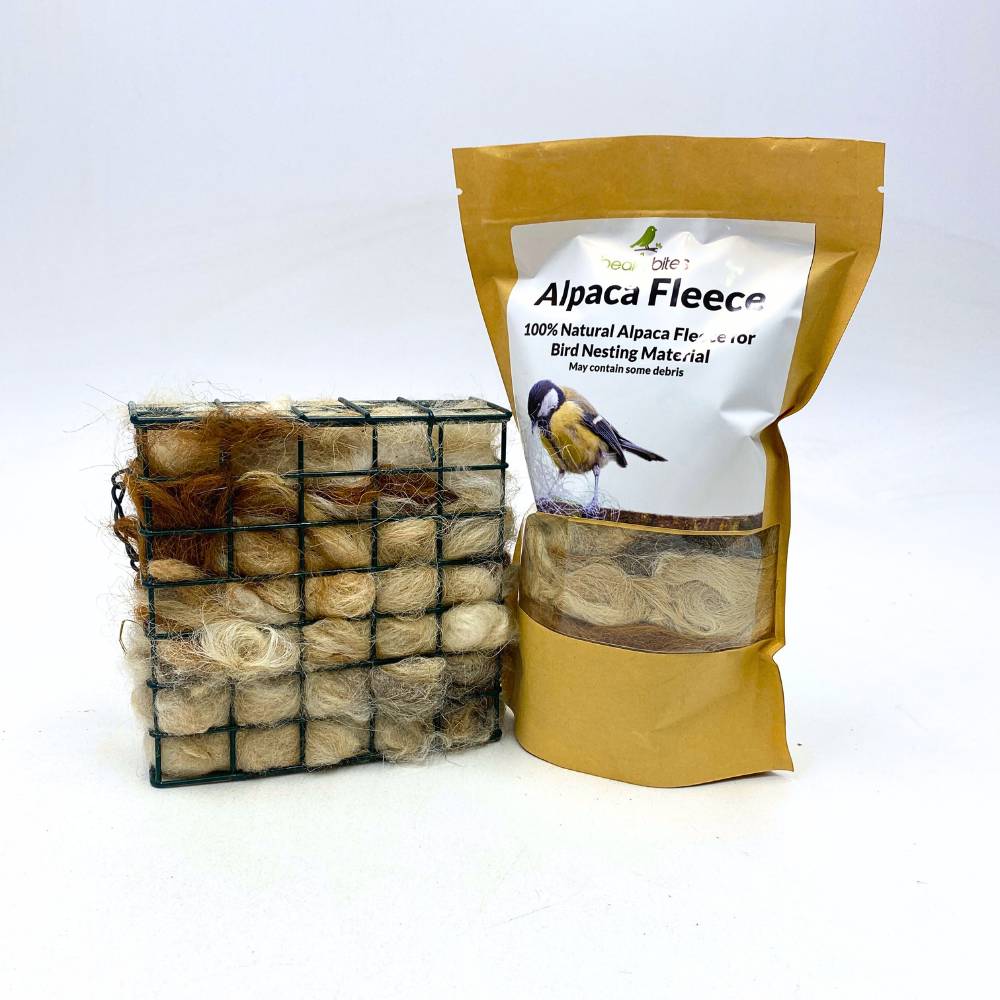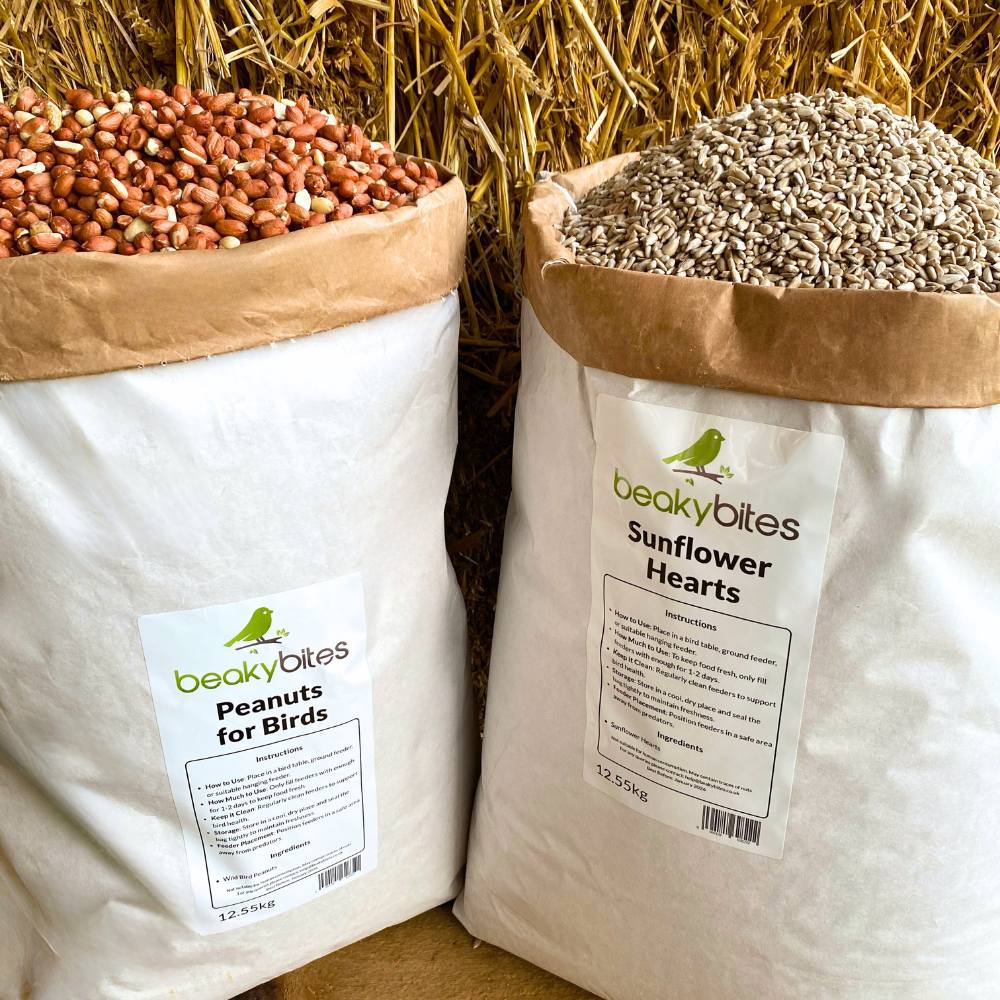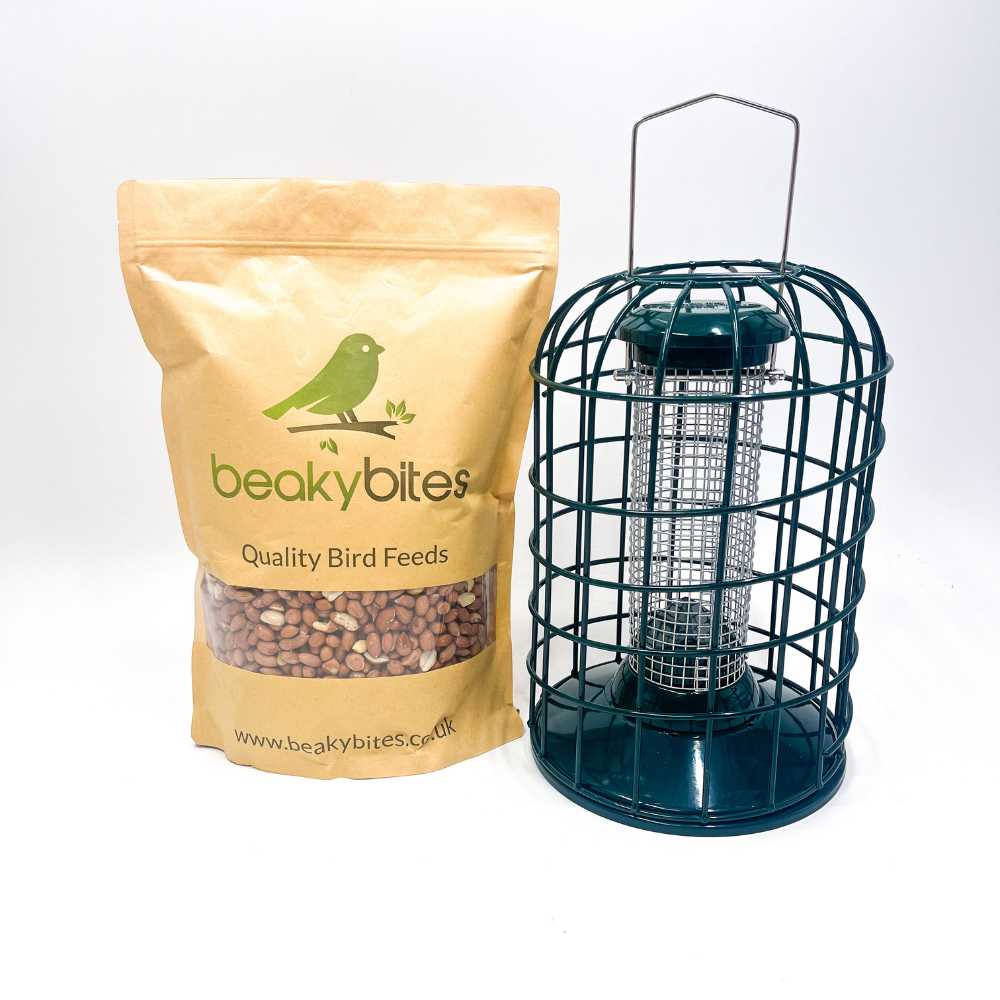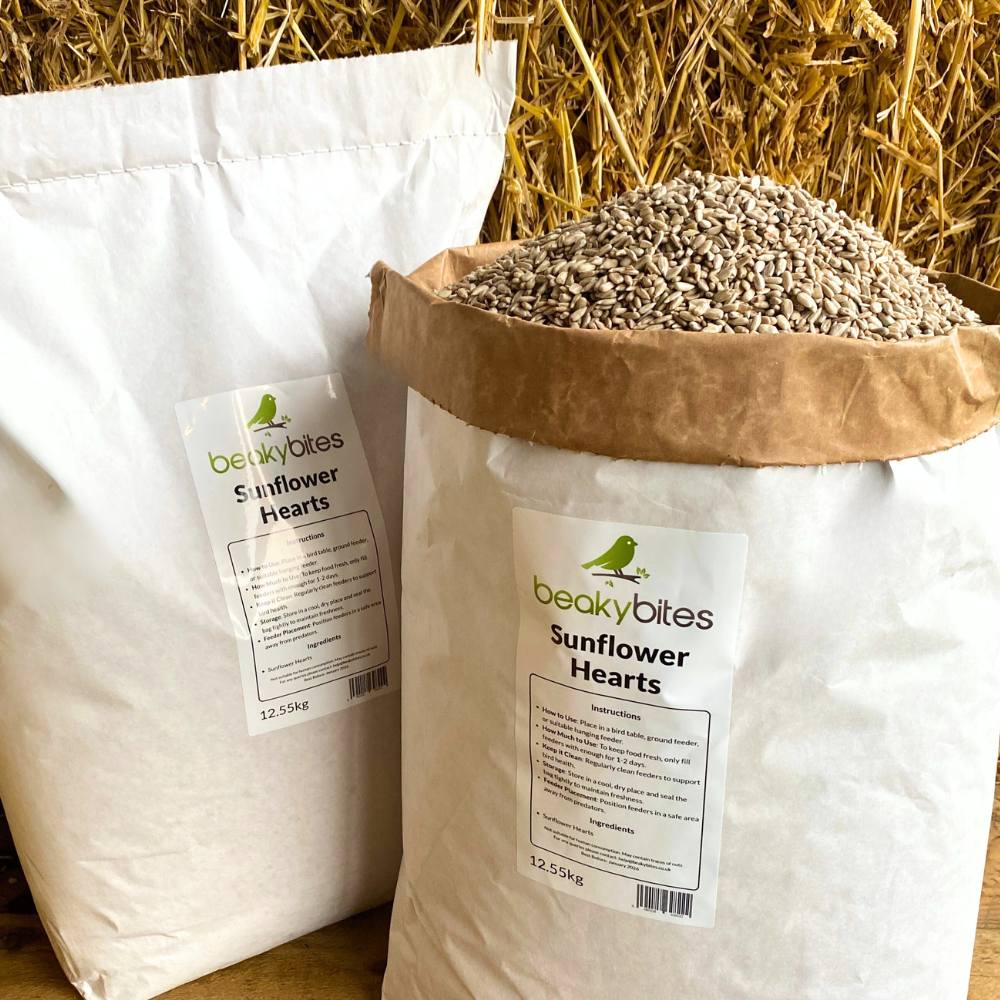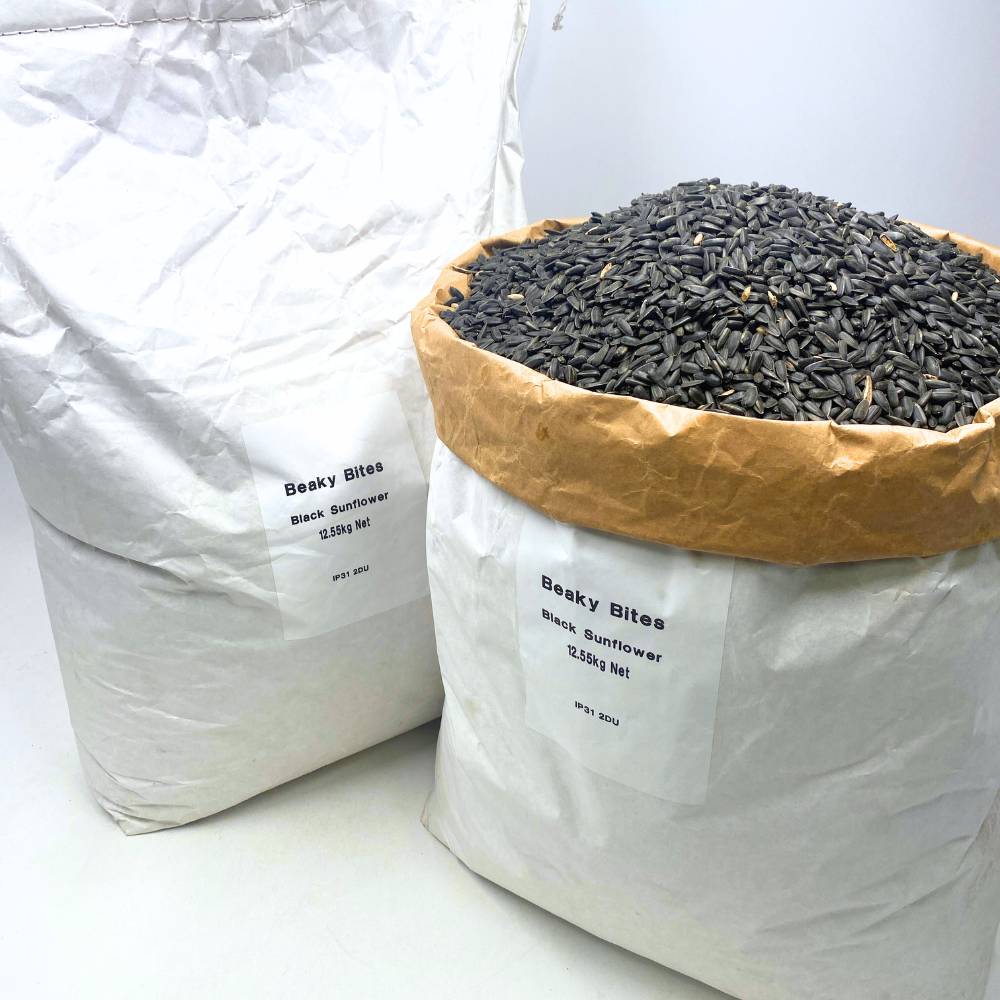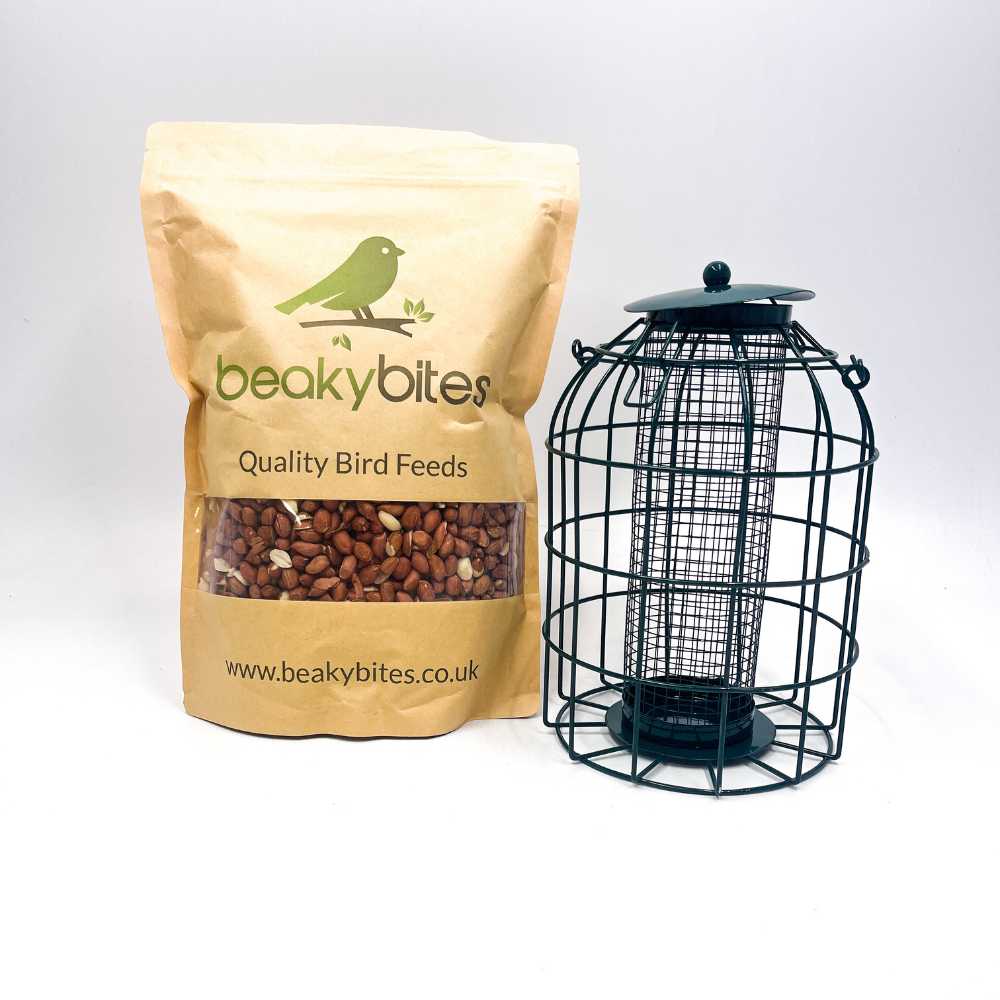Bird Fact File: Great tit
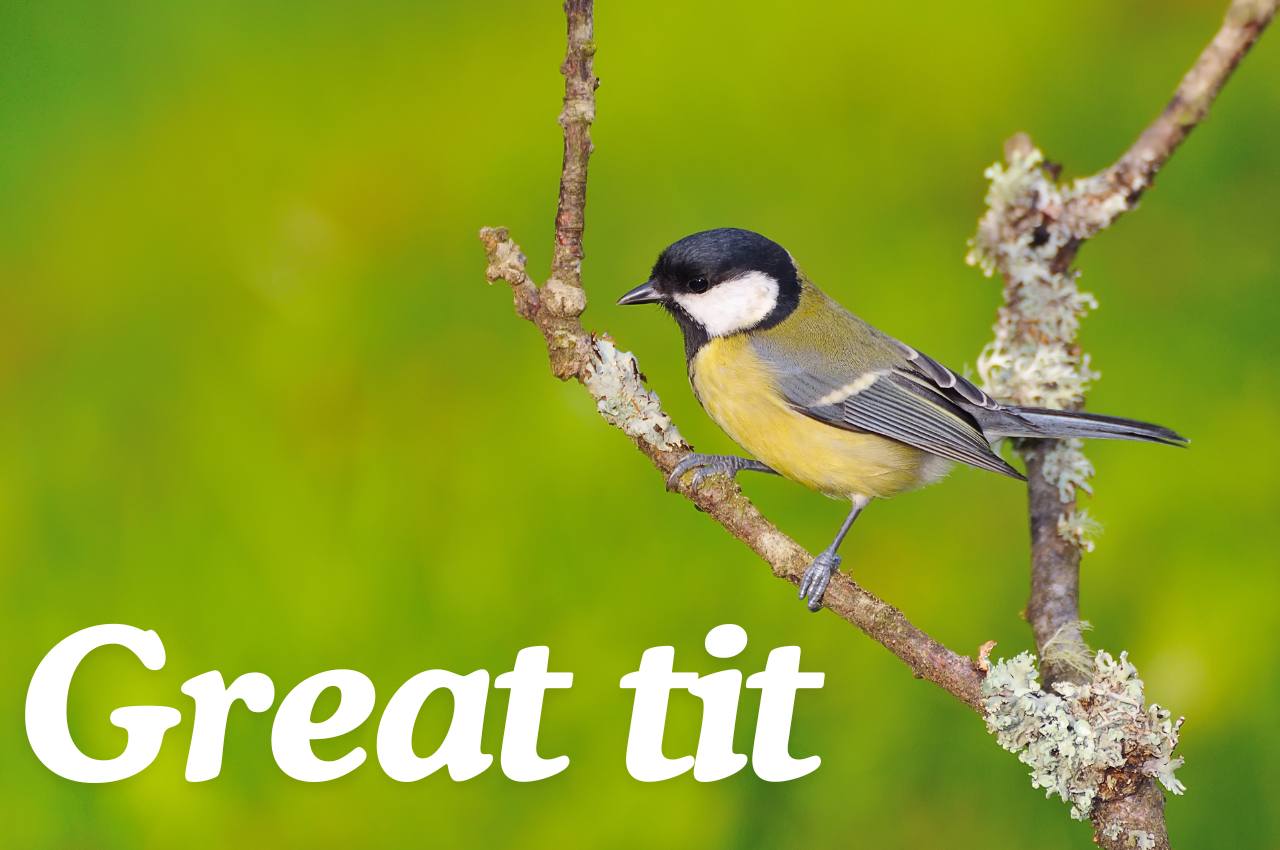
Welcome to our bird guide series brought to you by Beaky Bites! In each post, we'll take a closer look at a beloved UK garden bird to help you better understand and appreciate these amazing birds. From identifying distinct features to discovering their favourite foods and nesting habits, this series aims to provide an overview of our feathered wildlife.
Let's Meet the Great tit
Great tit Fact File | |
|---|---|
| Size: | 14cm, head to tail |
| Wingspan: | 24cm |
| Weight: | 18g |
| Colours: | Grey, Cream, Green, Blue, Black, White & Yellow |
| Eggs: | 7-9 eggs per brood |
| Nesting: | Cavity nesting. Using holes within trees, buildings and nest boxes |
| Population Status: | Stable |
The Great Tit, a big bold bird found in Europe, Asia and parts of North Africa, has a black head and loud, varied calls. It loves woodlands, gardens and parks so is a favourite among birders. The Latin name is Parus major and it’s in the Paridae family which includes other small, agile passerine birds. There are an estimated 2.5 million breeding pairs in the UK so it’s a very common and loved species in the countryside and towns.

Appearance and Behaviour
Great Tits are confident, beautiful birds. Both males and females have the same features, black head and neck, white cheeks, olive green back and yellow belly with a black stripe down the middle. Males have a broader, more prominent black stripe than females. Juveniles are like adults but with a duller plumage.
Great Tits have a varied diet, insects, seeds and nuts. In spring and summer they hunt caterpillars and other insects to feed their young, in autumn and winter they switch to seeds and suet, so they are regular visitors to garden feeders. Their strong, slightly curved beaks are perfect for cracking seeds and catching small insects.
Behaviourally Great Tits are active and chatty, flitting between trees and shrubs. They are territorial, especially during breeding season and males will sing loudly to defend their patch. Great Tits are also very adaptable, they can live in woodlands, hedgerows, gardens and parks. They are solitary or in pairs during breeding season but can be seen in mixed species flocks with other tit species in winter, foraging together for food. In gardens they are often seen at bird feeders, showing agility and boldness even when other birds are around.
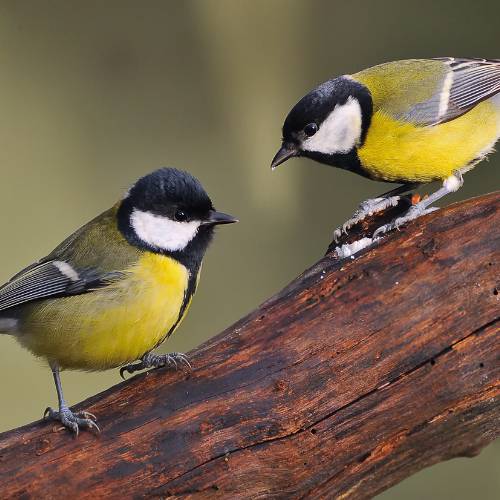
Where do They Hang Out and Eat?
Great Tits are opportunistic feeders, always on the move looking for food. Their diet changes with the seasons. In spring and summer they mainly eat insects, caterpillars, flies and spiders which are high in protein to help feed their young. They hop through trees, shrubs and bushes, often seen hanging upside down to get to insects on leaves and branches.
In autumn and winter when insects are scarce Great Tits switch to seeds, nuts and berries. They are frequent visitors to garden feeders during these colder months, especially sunflower seeds, peanuts and suet. Their ability to crack open seeds with their strong beaks makes them well suited to this type of foraging.
Great Tits are found in gardens, woodlands, parks and hedgerows. They are particularly fond of areas with a mix of trees and shrubs where they can find food and nesting sites. Gardens with feeders offering a range of seeds, mealworms and suet will attract these birds. Watching a Great Tit’s gymnastics as it flits between feeders and branches or listening to its loud calls is a joy for any bird nut.
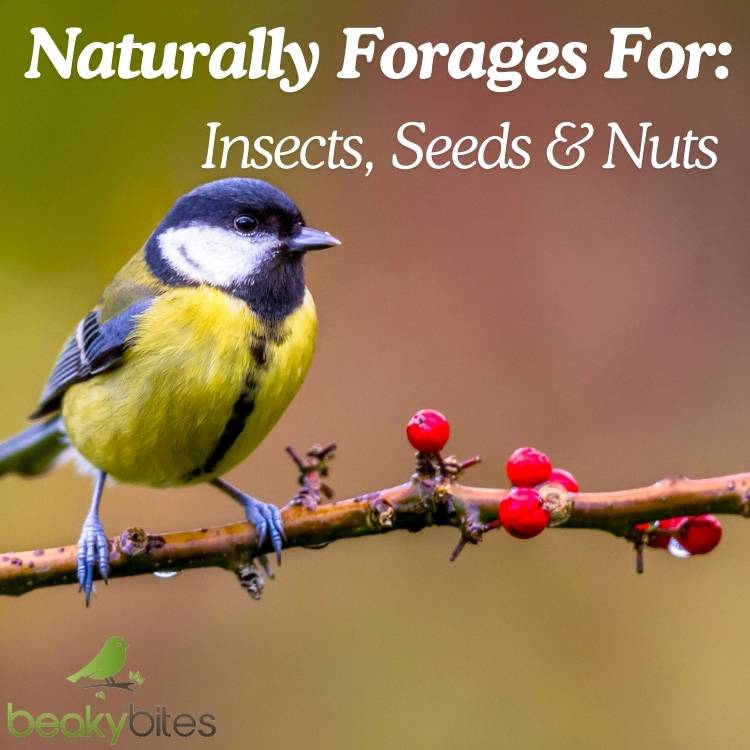
Breeding and Nesting
Great Tits start breeding in early spring, around April and can have up to two broods a year depending on food and weather. Number of broods is often dependant on the insect availability as they are the main food for their young. Female Great Tits lay 7-9 eggs which hatch after 14 days of incubation. Both parents feed the chicks, insects such as caterpillars, for the first two weeks of life before the young leave the nest. You can support them during this period by putting out dried mealworms and dried calciworms to replicate their natural food source.
Great Tits are territorial during breeding and males defend their territory through song and display flights. Once a territory is established, around mid January the pair will stay within it, only venturing out when necessary to find food, especially as their chicks grow and need more food.
The female Great Tit builds the nest herself, using moss, grass, feathers and even animal fur to create a soft cup shape. Nests are found in tree holes, nest boxes or even man made structures like walls and pipes. Choosing a sheltered nesting site is key to protecting the young from predators and weather, so they can develop safely until they are ready to fly.
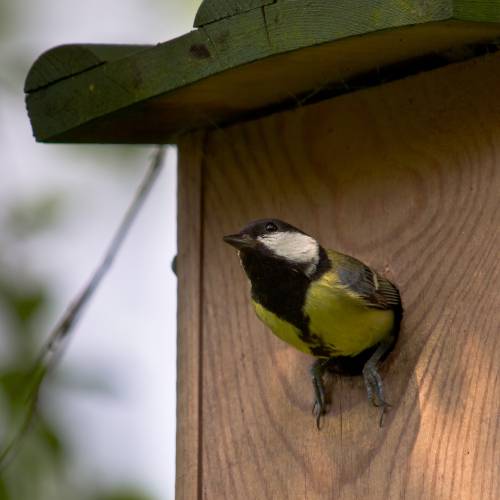
Attracting Them to Your Garden
Great Tits eat insects, seeds and nuts so having a garden with a good supply of these will attract them. Great Tits visit bird feeders all the time, especially in autumn and winter but you can support their foraging habits by planting native shrubs and trees that attract insects in the summer. Feeders with high energy foods like sunflower seeds, peanuts and suet pellets will get frequent visits as these are a good source of food especially in the winter.
Suet pellets are a great addition to your garden as they provide fat and energy to help birds like Great Tits get through the winter and breeding season. Offering suet in feeders or on platforms will give Great Tits a food source when insects are scarce.
Having a garden with trees, shrubs and native plants that attract insects is beneficial all year round. A reliable habitat with food and shelter is especially important during breeding season (spring to summer) as it helps adult Great Tits raise strong and healthy chicks. You can add to your garden with nest boxes so Great Tits have a safe place to breed.
To attract Great Tits plant native veg and feeders with seeds and suet. A mix of dense cover for nesting and open space for foraging will bring these bold little birds into your garden and make it a birdy place.

Conclusion
Creating a Great Tit-friendly garden involves providing a variety of food sources, including seeds, nuts, and suet pellets, as well as trees and shrubs that attract insects. Ensuring access to nest boxes or natural cavities for nesting is also important. By making these thoughtful adjustments, you can encourage these energetic and vocal birds to visit your garden, adding vibrant activity and song to your outdoor space.
Whether you're an experienced bird enthusiast or just starting out, welcoming great tits into your garden is a delightful and rewarding experience. Stay tuned for next week's post, where we'll discover another fascinating UK garden bird!
Frequently Asked Questions
When is the breeding season for Great Tits?
- Answer: The breeding season for Great Tits typically occurs from April to July.
How can I encourage Great Tits to nest in my garden?
- Answer: To encourage Great Tits to nest in your garden, provide suitable nesting sites like nest boxes and ensure a consistent food supply.
What type of bird feeder is best for Great Tits?
- Answer: Tube feeders or platform feeders that can accommodate seeds, suet, and peanuts are ideal for Great Tits.
How can I tell the difference between male and female Great Tits?
- Answer: Males have a broader, more prominent black stripe down their yellow bellies, while females have a slightly narrower stripe.
Do Great Tits migrate, or do they stay in the UK year-round?
- Answer: Great Tits are primarily resident birds in the UK, though some may migrate short distances in search of food.



